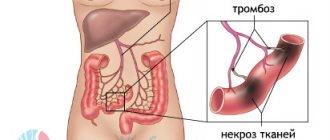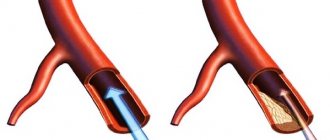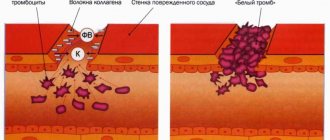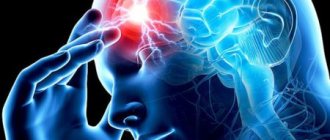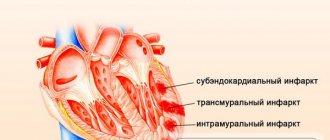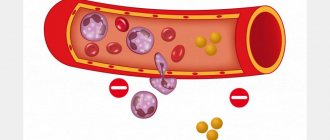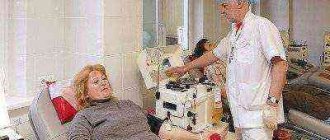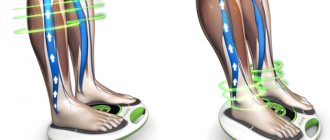Causes of calcification
If we talk directly about the aorta, the reason for the rupture of its fragile wall is increased pressure.
This results in instant death. The pressure increases due to the fact that thrombotic masses grow on the aortic valves, causing its mouth to narrow. The pathological process of calcification is the result of many factors that affect the regulation of calcium metabolism in the body. These include:
- change in pH level;
- changes in calcium levels in the blood;
- too low production of chondroitin sulfate;
- violation of non-enzymatic and enzymatic reactions and so on.
Sometimes pathology (other names - calcification, calcification) may be due to the fact that the body already has some diseases, for example, tumors, multiple myeloma, chronic nephritis and some other ailments.
Calcification can be a consequence of external damaging factors, for example, exceeding the level of vitamin D introduced into the body, or soft tissue injuries. By the way, the change in tissue itself (deep degeneration, necrosis) can also cause calcification.
Large calcareous conglomerates form in such tissues.
It is important to understand that calcification affects different parts. It is worth considering the most famous definitions:
- Calcification of the aortic valve. This process usually develops due to degenerative processes that occur in its tissues. The processes are caused by rheumatic valvulitis. The valve flaps have edges, but they are no longer the same as those of a healthy person; they are welded together and wrinkled. This leads to the formation of shapeless calcareous growths that block the mouth of the aorta. Sometimes the process can spread to the left ventricular wall, the anterior valvular leaflet and the septum between the ventricles. The disease occurs in several stages.
- hyperfunction of the left ventricle, which contributes to its complete emptying; because of this, dilatation of the cavity does not occur;
- accumulation of a large amount of blood in the LV cavity, so diastolic filling requires a large volume, which leads to increased contraction of the ventricle;
- myogenic dilatation, which occurs due to weakening of the heart muscle, that is, the myocardium - this leads to aortic insufficiency.
The functioning of the heart muscle largely depends on the condition of the coronary arteries. The blood flowing through them carries oxygen and nutrients to all the cells of our “engine”.
When the arteries are patent, the heart tirelessly works normally. If they are affected by calcification, they are narrow and the myocardium (the heart muscle, which makes up the bulk of its mass) lacks oxygen and cannot function at full strength.
This entails changes in the biochemical composition of the body, and then in the tissues, and the development of coronary heart disease occurs.
The causes of acquired valvular or subvalvular stenosis can be aortic atherosclerosis, rheumatic valve disease, aortic calcification, and infective endocarditis. Sometimes the cause is diabetes mellitus, chronic kidney disease, Paget's disease, systemic lupus erythematosus or carcenoid syndrome.
Symptoms of aortic stenosis may not appear for a long time, especially at an early age. However, over time, the patient begins to complain of squeezing, aching pain in the chest (in the heart), shortness of breath, fainting, increased heart rate, nausea, and fatigue.
Since cardiac output is reduced, this can lead to loss of consciousness. In later stages, aortic stenosis can cause a sudden attack of suffocation (cardiac asthma).
The pathogenetic mechanism of calcinosis of any localization is based on the transition of calcium from a soluble liquid state to the excessive accumulation of its salts in the tissues of the human body.
This pathological condition can develop as a result of many provoking factors, but the trigger for the development of calcification is a failure of calcium metabolic processes in the body.
Most often, calcification of blood vessels located in the brain is a hereditary pathology. However, there are other reasons for its development:
- constant stress;
- passive lifestyle;
- nervous exhaustion;
- bad habits;
- diabetes mellitus;
- high blood pressure;
- excess weight;
- high cholesterol levels.
Pathology can also develop as a result of metabolic disorders in the body, functional and structural disorders of the arterial membranes.
Vascular calcification - getting to know the disease and its symptoms
Symptoms of a pathology such as vascular calcification can manifest themselves in different ways. Everything depends on the organs affected due to the development of the process. For quite a long period the disease is asymptomatic, which leads to the detection of pathological changes in the later stages. Let's consider how the disease manifests itself depending on the location.
Calcification of cerebral vessels
Calcification of cerebral vessels is considered one of the common diseases. Most often, focal or isolated areas of cholesterol deposits are formed. In medicine, it is customary to call this type of pathology cerebral vascular atherosclerosis. When it occurs, internal tissues grow, causing a narrowing of the lumen and, as a result, causing a lack of blood circulation to the brain. When the lumen is completely closed, tissue necrosis occurs; depending on their location, this can cause:
- headache;
- dizziness and fainting;
- increased fatigue;
- memory or coordination disorder.
What is aortic calcification?
The aorta is the main artery that starts from the left ventricle of the heart, passes through the entire thoracic and abdominal sections, passing into the thin median sacral artery. Aortic calcification, what is it? It should be noted right away that the disease can be called age-related, since this pathology usually occurs in people older than 55–60 years. Depending on the location of the growth of calcium salts, characteristic symptoms appear.
When the thoracic part of the aorta, including its ascending part and arch, is damaged, the patient feels the following symptoms:
- chest pain that increases with physical activity;
- burning in the heart area with impulses radiating to the neck, arms, back;
- manifestation of hypertension;
- change in voice (unnatural hoarseness appears).
With calcification of the aorta passing through the abdominal region, the patient may experience:
- pain in the intestines after eating;
- problems with stool;
- weight loss;
- bloating and flatulence.
Before passing into the thin sacral artery, the aorta is divided into the left and right iliac arteries. If calcification appears near the branching, then the patient has the following symptoms:
- slight uncontrollable limping;
- constantly cold feet;
- the appearance of ulcerative formations on the skin of the fingers of the lower extremities;
- in men there is a violation of potency.
Cardiac vascular calcification
Overgrowths of calcium salts also form in the coronary artery, which leads to its deformation. Since the coronary artery is the main “supply” of the heart muscles with oxygen and nutrients, the narrowing of its lumen provokes a decrease in blood flow to the myocardium. During cardiac stress, part of the affected coronary artery is unable to relax, and this over time can lead to blockage of the lumen and necrosis of part of the myocardium.
In addition to the coronary artery, calcification can affect the mitral valve, which is responsible for the passage of the volume of blood ejected during systole of the left ventricle of the heart. This pathology has not yet been fully studied and has similar symptoms to the manifestations of rheumatism, hypertension and cardiosclerosis.
https://youtu.be/https://www.youtube.com/watch?v=Tgqsvu6ozD4
_
Symptoms
It is very important to pay attention to the symptoms in time and begin effective treatment, because life may be at risk. However, the disease can remain silent for a long time. However, some manifestations are still characteristic of certain species.
If the aorta, the valve leaflets, is affected, various symptoms may occur. For example, if the thoracic aorta is affected, severe pain is observed, felt in the sternum, arm, neck, back and even the upper abdomen.
The pain may not go away for days, intensifying with stress and exertion. If the abdominal aorta is affected, after eating, aching pain in the abdomen develops, it becomes swollen, the person’s appetite decreases, he loses weight, and suffers from constipation.
When the branching artery becomes calcified, lameness, ulcers on the toes, and coldness in the legs are observed.
When the coronary arteries are damaged, the pain is similar in nature to angina pectoris, and discomfort is also felt. Pain manifests itself when the conditions in which a person is located change, for example, the weather changes, he eats or begins to perform physical work.
When the mitral valve is damaged, a person complains of shortness of breath, rapid heartbeat, and a bloody cough. His voice becomes hoarse. The doctor may notice a blush that contrasts with the pallor of the rest of the skin.
In isolated form, aortic calcification is uncommon. In most cases, it already leads to damage to the heart valves in the early stages.
This provokes severe hemodynamic disturbances, the development of organic lesions and heart failure. In the early stages, while there are no heart complications or circulatory problems, symptoms of aortic calcification may be completely absent.
But in the later stages, serious physiological changes occur in the body, which cause the following symptoms:
- weakness, decreased performance;
- pain in the heart like angina pectoris;
- disturbances in heart rhythms;
- frequent dizziness;
- darkening of the eyes, fainting, especially with a sudden change in body position;
- shortness of breath, initially only with exertion, then at rest;
- in advanced cases - shortness of breath during sleep.
Depending on which part of the aorta is affected, the clinical picture may vary. With calcification of the thoracic aorta, pain in the chest, back, and upper abdomen can be severe and paroxysmal.
It often radiates to the arm and neck, can intensify with physical activity and stress, and sometimes lasts for days. When the abdominal aorta is calcified, aching pain in the abdominal area after eating is noted.
A person may have constipation, bloating, increased gas formation, loss of appetite, severe weight loss, and a general disorder. Calcification of the abdominal aorta quickly leads to the development of an aneurysm, threatening massive hemorrhage and death of the patient.
Calcification of the aorta at the site of the branch of large arteries leads to the appearance of ulcers on the toes, paleness and coldness of the skin of the lower extremities, lameness and other symptoms of impaired trophic tissue of the lower body.
Damage to the coronary arteries together with the aorta causes frequent attacks of angina pectoris and constant discomfort in the heart area. The pain intensifies when the weather changes, after physical activity, and sometimes while eating.
Calcification of the aortic valve does not produce symptoms for a long time, but unexpectedly leads to a high degree of heart failure and, without treatment, to the death of a person within 4-6 years after the first symptoms appear.
With calcification of the valve apparatus, a person notices the following symptoms:
- shortness of breath;
- heart rhythm disturbance;
- heartache;
- episodes of loss of consciousness.
Severe valve calcification can cause an attack of cardiac asthma, or suffocation. A buildup of calcium on the inside of the aortic wall often causes it to rupture. Signs of this dangerous condition are:
- severe pain in the chest or abdomen;
- a sharp decrease in blood pressure and pulse;
- loss of consciousness;
- nausea and vomiting;
- paleness of the skin or its cyanosis;
- involuntary defecation (urination).
With such symptoms, a person needs emergency medical care.
Symptoms of calcification of blood vessels in the brain depend on the degree of tissue damage. Signs of pathology include:
- death of tissue clogged with calcium salts;
- dilation of arteries and spasms;
- migraine;
- frequent headaches;
- darkening of the eyes;
- fainting;
- nervousness and irritability;
- frequent fatigue;
- memory impairment.
Localization
This disease can affect various segments of the cardiovascular system. The most common manifestations are the locations described below.
Aortic calcification
The aorta is the largest vessel emerging from the left ventricle of the heart and dividing into many small vessels. Through the aorta, blood flows to almost all organs and tissues of the body.
It consists of 2 parts:
- The initial area that provides blood flow to the upper part of the body (arms, head, neck, chest).
- The final section. Accordingly, the lower part of the body is assigned to him.
Aortic calcification is a rather dangerous manifestation of this disease, which can be fatal. Calcifications (calcareous formations) are not amenable to therapeutic effects . They cannot be crushed or removed from the body. Therefore, doctors can only eliminate the causes of their formation in this area.
Most often, calcification of the aortic valve leaflets occurs in elderly people (over 60 years). They are concerned about the following symptoms:
- Chest pain, which is felt in the neck, arms, back, upper abdomen.
- Hypertension.
- Swallowing dysfunction.
- Dizziness.
- Brief loss of consciousness.
- Hoarseness of voice.
If calcium damage occurs in the branching zone of the aorta, then the person will experience the following symptoms:
- Lameness.
- Ulcer on toes.
- Insufficient blood flow to the arteries of the lower extremities (feet are constantly cold).
- Impotence.
- Aneurysm.
The main causes of aortic calcification are increased calcium levels and the inability to remove it naturally from the body.
Calcification of the abdominal aorta
With calcification of the abdominal aorta, a person experiences abdominal pain after eating, and these sensations intensify, and after a while the patient begins to limp. In addition to these symptoms, others are observed:
- weight loss;
- decreased appetite;
- bloating;
- constipation
Such a disease without appropriate treatment can lead to death within a year. As a treatment, only one option is possible - removal of the affected area of the aorta.
Calcification in the coronary arteries
Heart cells need oxygen and nutrients in sufficient quantities. The coronary arteries provide them with everything they need. When healthy, they look like a white tube - smooth and flexible.
With calcification of the coronary arteries, plaques form that clog these “hoses.” This leads to deformation. As a result, blood flow to the myocardium is limited or absent altogether, and this area dies.
Calcareous damage to this heart valve can trigger myocardial infarction, a disease characterized by the death of one or more parts of the heart muscle.
Cerebral vascular calcification
With calcification of cerebral vessels, their deformation is observed, which causes a lack of blood supply. The risk group includes:
- people over 20 years old;
- men 50-60 years old (more often);
- women over 60 years of age (more often).
Often, predisposition to this disease is explained by genetic inheritance. And the impetus for starting the process can be:
- Frequent stressful situations.
- Psychological stress.
- High blood pressure.
- Diabetes.
- High cholesterol levels.
- The first stage of obesity.
- Bad habits.
- Limited movement in daily life.
Diagnosis and treatment
Currently, there are many methods that together make it possible to establish the correct diagnosis in the presence or absence of a clinical picture of pathology:
- Ultrasound of the heart. Allows you to visualize calcifications in the form of multiple echo signals.
- Ultrasonography. It reveals calcification of the aortic walls in the form of a local increase in their density, but does not give an idea of the condition of its valve.
- X-ray in oblique projection. Areas of calcification of blood vessels and lime deposits on the valve are noted.
- CT. Gives a complete picture of the degree of calcification of the aorta and heart.
- Ultrasound densitometry. Necessary to assess the condition of bone tissue and suggest a diagnosis of calcification.
Aortic calcification is practically not manifested by changes in laboratory parameters, so diagnosis is mainly carried out using instrumental techniques.
The presence of calcification of the aorta and aortic valve can be determined using the following methods:
- ultrasound examination of the heart;
- chest x-ray;
- cardiac catheterization;
- ventriculography;
- aortography;
- ultrasonography.
The research results are interpreted by the attending physician. After making a diagnosis, the specialist determines treatment tactics for the patient. Typically therapy includes:
- Taking calcium antagonists with a high concentration of magnesium: Verapamil, Tiapamil, Felipamina.
- Taking medications to stabilize blood pressure: Nitro-5, Sustonita, Arfonada.
- Taking diuretics: Veroshpiron, Furosemide.
If calcification provokes atrial fibrillation, the person is advised to take Digoxin. If there is a threat of developing heart failure or aortic rupture, the decision is made in favor of surgical treatment. For calcinosis, the following is carried out:
- Replacement of the affected valve with an artificial one (if the aortic valve is affected).
- Aortic balloon valvuloplasty or bypass using a vascular graft (if the entire aorta is affected).
The development of calcification can be prevented with the help of folk remedies. They can be an effective addition to traditional therapy. But before taking folk remedies against calcification, you should consult your doctor.
Garlic is used to slow down the process of calcification. It helps normalize blood pressure, prevent atherosclerosis and dissolve calcium deposits on the walls of blood vessels. You can prepare an effective remedy at home:
- You need to take 300 grams of chopped garlic and pour a glass of vodka over them.
- The container with the workpiece is placed in a dark place for a week.
- For the first 5 days, the drug is taken three times a day, 1 drop. It is recommended to add the medicine to milk. Every day the number of drops is increased by 1 (for each dose). So, on day 5 a person should take 15 drops of garlic tincture.
- From the 5th day, the number of drops taken at a time is reduced by 1.
- From the 10th day you need to take 25 drops per day.
The course of treatment is 4 months with a 2-month break.
If symptoms of aortic stenosis appear, you should contact a cardiologist or begin an examination with a general practitioner. Using a stethoscope, the doctor will listen for a murmur over the aorta as the left ventricle contracts.
An electrocardiogram can reveal ventricular hypertrophy. Ventricular enlargement can also be detected using x-ray.
An echocardiogram uses ultrasound to evaluate the condition of the valves and heart muscle.
Also, an information research method is cardiac catheterization (insertion of a catheter into an artery). Provides information about intracardiac pressure, the location of the narrowing, the concentration of oxygen in the blood, the condition of the valve and the presence of a defect.
The most informative diagnostic method for making a decision on surgical intervention is an angiocardiographic study. It takes place in two stages: ventriculography and oorthography.
Treatment
Of course, treatment of calcification does not always require surgical intervention. It all depends on the specific case. The earlier the disease is detected, the greater the chances of curing it and avoiding serious consequences. Treatment depends on the location of the pathology. Sometimes you can be treated with folk remedies, but only as prescribed by a doctor.
For example, treatment of mitral valve disease may be based on the use of mitral commissurotomy and prophylactic drug therapy. Such timely methods allow you to restore heart activity and lead an active lifestyle.
Quite often such deposits are found on the walls of the main main vessel of the human body. Aortic calcification poses a serious threat to life, as it leads to weakening of the artery walls and a decrease in their elasticity.
Against the background of such pathological changes, other serious diseases begin to develop, aneurysms, diverticula, etc. form. The risk of rupture of vulnerable vessel structures under blood pressure also increases, which will lead to the death of patients.
To prevent the disease and diagnose it at an early stage, you should periodically have your blood tested as directed by your physician or cardiologist. If the analysis reveals a high level of calcium in the blood, this is a deviation, the cause of which must be found out.
Treatment of aortic calcification is not an easy task and, of course, it is better to take care of your health in advance, but even if time is lost, you should not despair. You should find a good specialist, follow his instructions, sacrifice smoking, give up unhealthy, fatty, spicy, smoked foods, regularly do light exercise and your efforts will be rewarded.
Additional Information
What is calcinosis? Everyone knows that calcium is a vital nutrient. With its deficiency, bones become fragile and there is a risk of injury.
It is considered normal when a person’s calcium salts in liquids are dissolved. If calcium enters the blood vessels, aortas and other organs, a disease develops - calcinosis.
With calcification, the walls of blood vessels seem to become calcified and lose their elasticity.
High blood pressure can cause a blood vessel to rupture, and the worst case scenario is death. Calcification of heart vessels and brain vessels are the most dangerous places for the development of pathology.
Due to the fact that calcification, as a systemic or limited pathological change in tissue, is irreversible, the question of drug correction of this condition remains open and the only radical method of eliminating foci of calcification is considered surgical.
In any situation, therapeutic measures for calcinosis of one or another localization must be pathogenetically justified and consistent in each individual situation.
Since calcification is prone to progression and replacement of healthy tissue of any organ with connective tissue containing dense areas of calcification, when they accumulate multiple times, the function of the organ can suffer significantly, which immediately affects the patient’s health.
In this regard, the first-priority therapeutic measure for calcinosis of any form, localization and intensity is the correction of eating behavior, as well as the elimination of factors that contribute to excess calcium intake into the body (taking medications, etc.).
In some situations, when the foci of pathological calcification are small in size and localized singly in the parenchyma of the organ, calcification does not pose a danger to the patient’s health and does not require the use of specific medications.
However, there are a number of pathological forms of calcification, accompanied by severe dysfunction of the organ, and therefore, the use of conservative or surgical measures to one extent or another is a prerequisite for maintaining the patient’s normal quality of life.
Skin calcification most often has a widespread, generalized nature and provokes the development of a cosmetic defect, and therefore, patients in this category, more than others, need to be prescribed an adequate amount of therapeutic measures.
In a situation where calcification manifests itself as large subcutaneous nodes that have a dense structure and are often accompanied by infection, the first and only effective treatment method is surgery using electrocoagulation.
This technique allows not only to excise foci of calcification as carefully as possible, but also to simultaneously disinfect the wound surface, thereby improving the healing process of a postoperative wound.
If calcification of the skin is localized in the area of large joints, the patient is recommended to use various methods of physiotherapeutic treatment to prevent the development of arthrosis-arthritis (galvanotherapy, application with ozokerite, ultraviolet irradiation).
Nephrocalcinosis also belongs to the category of rapidly progressing pathology, which, in the absence of timely drug assistance, provokes severe disorders of the urinary and urinary functions of the kidneys.
In a situation where nephrocalcinosis is not accompanied by signs of renal failure, the patient should be advised to follow dietary rules, as well as provide drug treatment for the underlying disease.
If there are signs of renal failure, the only effective treatment is hemodialysis followed by kidney transplantation.
Pregnant women with foci of calcification in the placenta need dynamic ultrasound monitoring and if signs of fetoplacental insufficiency appear, it is recommended to prescribe drugs whose action is aimed at improving blood flow through the vascular network of the placenta and uterus (Trental 100 mg 2 times a day orally).
In order to prevent premature placental abruption, it is advisable to prescribe drugs that reduce uterine tone to pregnant women suffering from calcinosis (Ginipral 5 mcg intravenously).
As a preventive treatment aimed at eliminating the progression of the calcification process, specific antiviral therapy is used.
Therapy for vascular calcification is mainly aimed at eliminating the symptoms of the disease. Without appropriate treatment, such a disease can develop into thromboembolism or endocarditis. However, drug therapy for calcinosis exists. There are not so many methods:
- Calcium compound antagonist drugs (Verapamil, Anipamil, Nifedipine, etc.). They can significantly reduce the amount of substance in the vessels and arteries. These medications contain magnesium.
- Diuretics (“Furosemide”, “Torasemide”, “Mannitol”, etc.). The drugs help relieve a person from blood stagnation.
- Medicines aimed at lowering blood pressure.
- Drugs for the prevention of coronary heart disease (Clopidogrel, Metoprolol, etc.).
If the disease is severely advanced, surgical intervention is performed to treat it. This method is called valvuloplasty. In more severe cases, the damaged aorta is replaced with an artificial one.
How to diagnose and treat vascular calcification
A distinctive feature of calcification, which distinguishes it from atherosclerosis and thrombosis, is its localization, which is often diagnosed in the vessels of internal organs (heart, brain). To identify the disease, the following methods are used:
- Ultrasound and Dopplerography - helps to detect calcium accumulations in the great vessels;
- EchoCG – detects disease in the cavity and valves of the heart;
- Doppler ultrasound of the cervical artery to diagnose the condition of the arteries of the brain;
- MRI – used if the above mentioned studies are not enough.
Laboratory tests are also required to determine the concentration of calcium elements in the blood plasma.
The sad fact is that a specific etiotropic treatment for vascular calcification has not yet been developed, and the main therapy is aimed at eliminating the main mechanisms of development of the disease (pathogenetic treatment). The following treatment methods that are used in medical practice should be highlighted:
- improvement of microcirculation, treatment of vascular insufficiency;
- use of calcium channel blockers;
- corrective hormonal treatment;
- therapy aimed at reducing low-density lipoproteins;
- cardiotropic drugs.
In order to prevent the development of vascular calcification, it is necessary to regularly do blood tests for calcium levels. Be vigilant and don't get sick!
pro-varikoz.com
Alternative therapy for the disease
To reduce the level of calcium in the blood and improve the condition of blood vessels, you need to start eating right, so the basis of traditional treatment for calcinosis is diet. Patients are advised to limit the consumption of foods that contain this mineral by supplementing their diet with foods rich in magnesium.
The latter is the best calcium antagonist and promotes its rapid elimination from the body.
Useful products for calcinosis are:
- cashews, pine nuts, hazelnuts, peanuts and almonds;
- barley and buckwheat, millet, oatmeal;
- peas, beans, Brussels sprouts.
A diet is required not only to lower the level of calcium in the blood, but also to normalize body weight, in case of excess weight, which predisposes to the development of atherosclerosis and calcification.
Folk remedies can also reduce the rate of vascular calcification. Garlic is especially useful for this purpose.
To make a healing potion, 300 g of crushed garlic is poured into 200 g of vodka and left in the dark for 10 days. Then take the tincture, diluting it in 50 ml of cold milk.
In the first 5 days, drink 5 drops three times a day, adding 1 drop per dose daily. The next 5 days work in reverse order, reducing the number of drops from 10 to 5 per dose (three times a day).
Then, until the end of the tincture, take 15 drops three times a day. You can also eat 2 cloves of garlic per day for at least a month instead of tincture.
Prevention of vascular calcification
To prevent vascular calcification it is necessary:
- keep weight under control;
- Healthy food;
- monitor hormonal levels and calcium levels in the blood;
- give up bad habits;
- exercise regularly;
- Periodically visit a doctor and undergo examination.
Treatment of vascular calcification is not an easy task. It is much easier to take care of your health before the first symptoms of pathology appear - forget about smoking, spicy, fatty, smoked foods, and exercise regularly. But you shouldn’t give in to despair, even if time is lost. If a pathology is detected, you should follow the recommendations of a competent specialist and be attentive to the changes occurring in the body.
Therapy with folk remedies
Blocking of the lumen of blood vessels by calcium plaques is fraught with serious complications, including death. To treat such a pathology, many doctors prescribe alternative medicine. For this purpose, you can use the following drugs:
- In equal proportions, you need to mix fresh garlic, chopped lemon, and natural honey. It is recommended to take this mixture 2 times a day, one spoon at a time.
- Squeeze the juice from pineapple, carrots and beets and mix. You should add a little garlic to the resulting mixture. It's better to use its juice. It is recommended to take 50 milliliters of the resulting mixture three times a day.
Herbal tincture
Recipe No. 1. It has long been noticed that they are able to regulate blood pressure, prevent the development of atherosclerosis, thrombosis, strengthen the walls of blood vessels and dissolve calcium deposits on them.
Healers of Ancient China prepared such a garlic tincture. We crushed 300 g of garlic cloves and poured a glass of alcohol into them.
Next, they left the composition to “mature” for a week in a dark place and filtered it. After this, they began taking the drug according to the scheme.
- The first five days: start drinking the product 1 drop three times a day, diluting it in a quarter glass of cold milk. Every day the dose of the tincture taken is increased by one drop. In the evening on day 5, the tincture consumed will be 15 drops.
- The next five days: the dosage is reduced one drop at a time. In the evening on day 10, if you follow the instructions, you should drink 1 drop of tincture.
- All subsequent days, take 25 drops of the product.
To prepare such a medicine you will need 15 grams of calamus and elecampane rhizomes. The raw materials must be crushed and combined in one container.
The finished mixture should be filled with 200 milliliters of medical alcohol. It is recommended to infuse the drug for 13 days in a cool place.
The container with the medicine must be shaken daily. The finished product should be filtered.
It is recommended to take 8 drops of tincture three times a day. The course of therapy is no more than 50 days.
